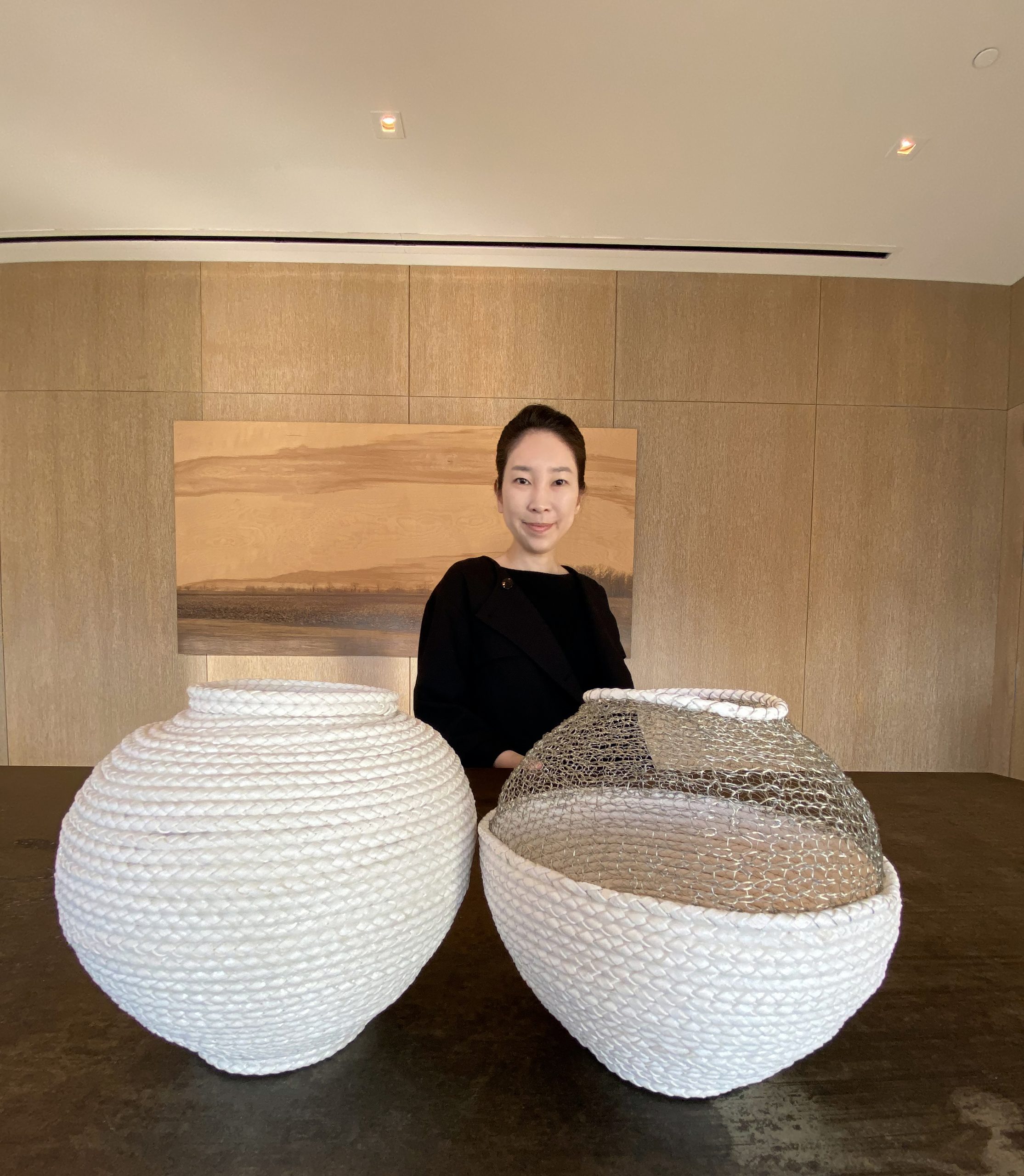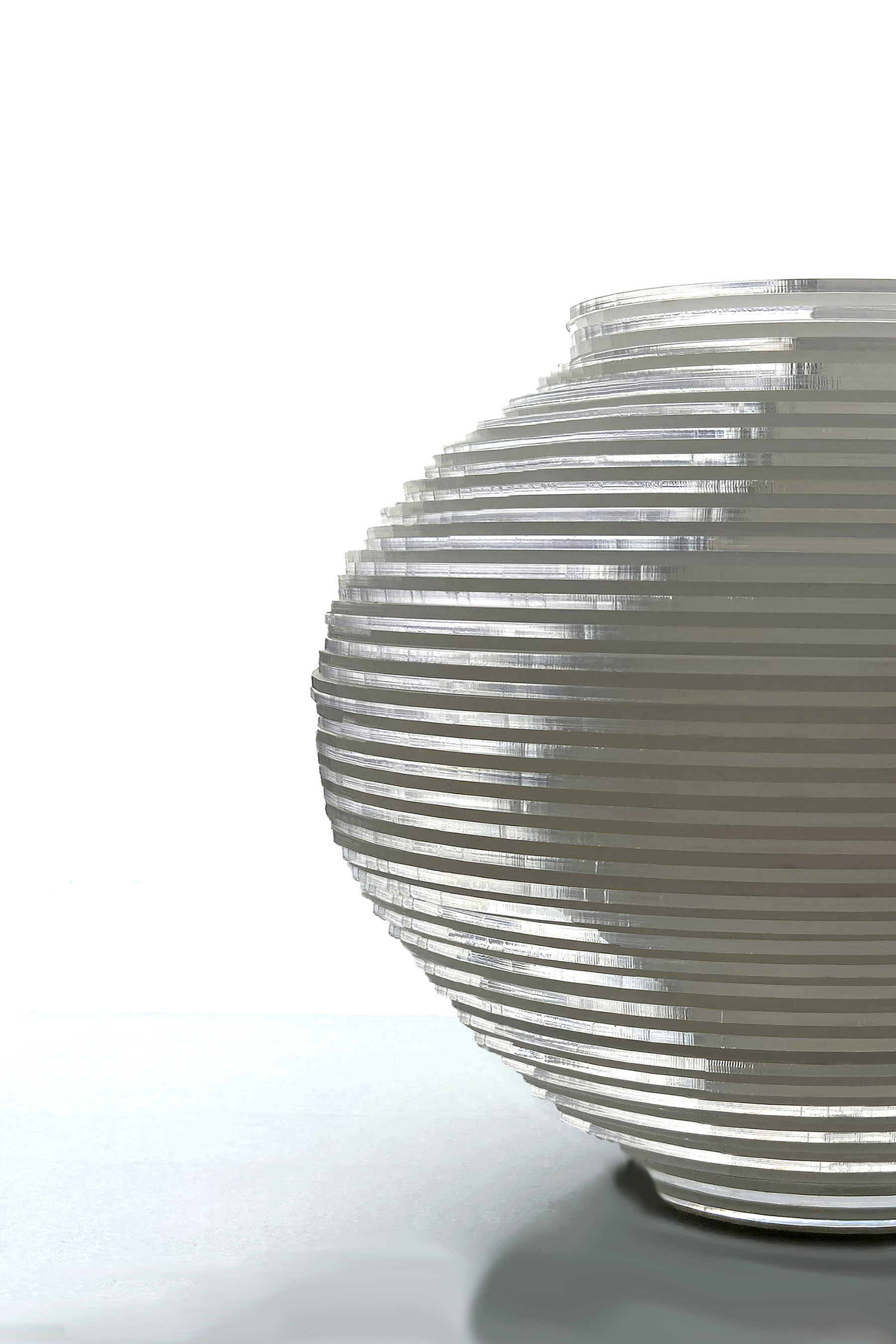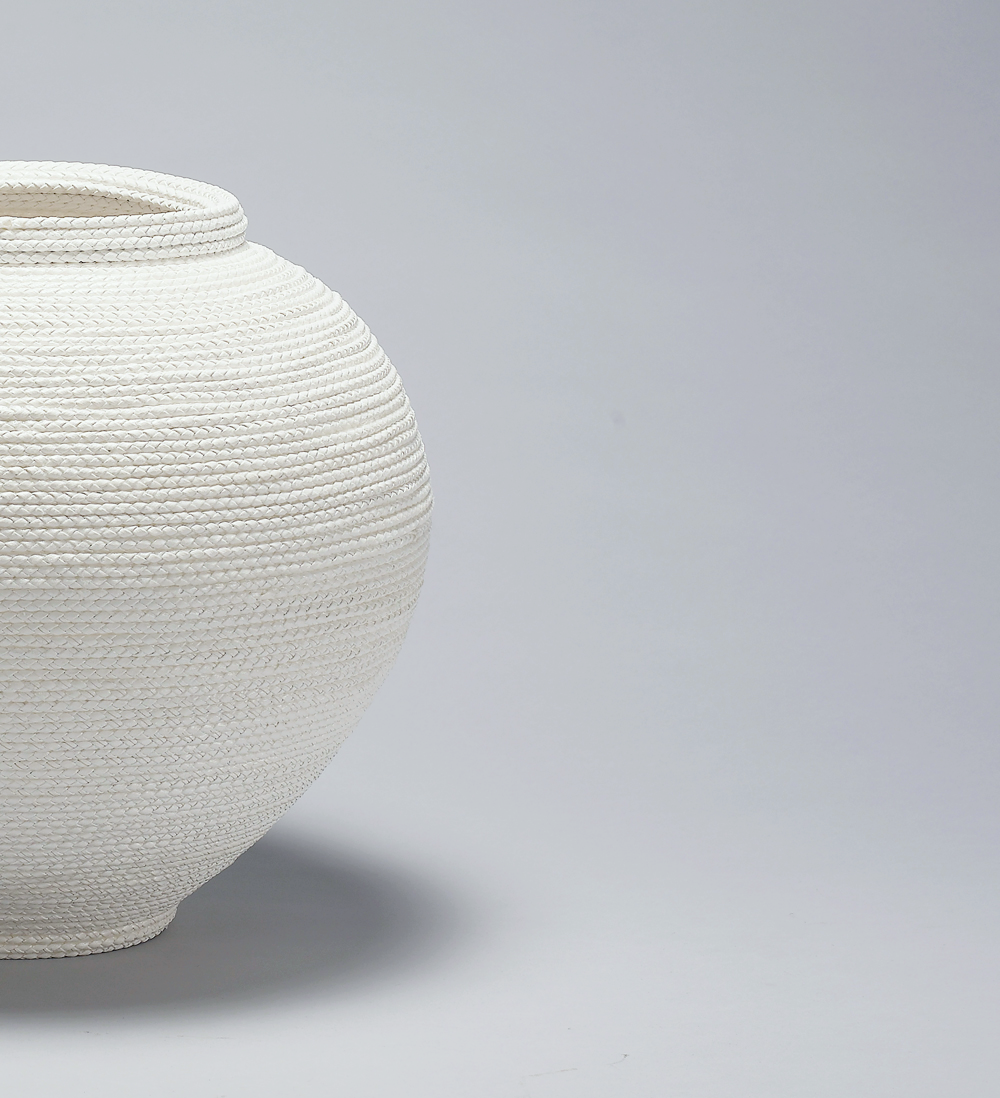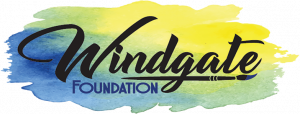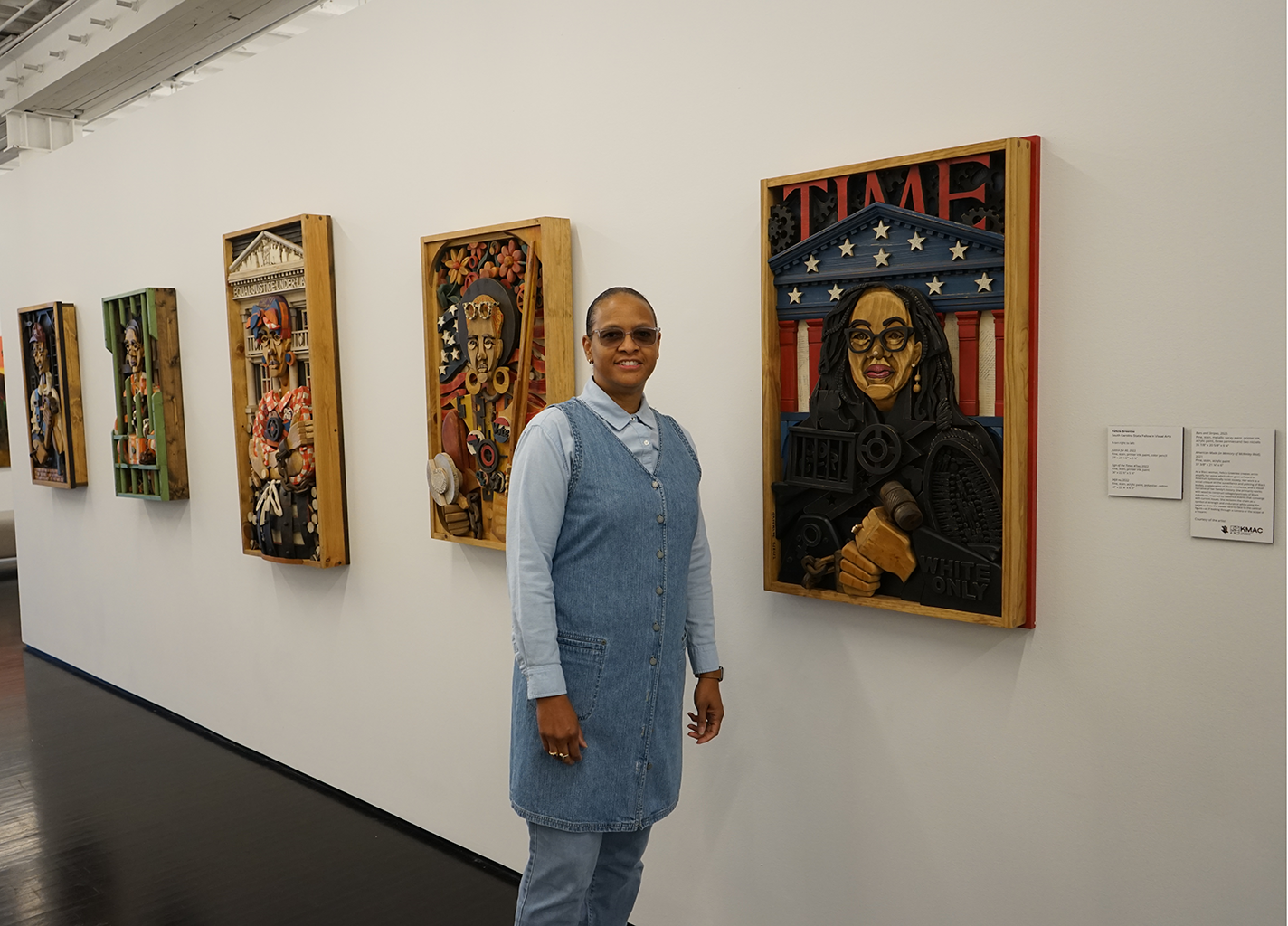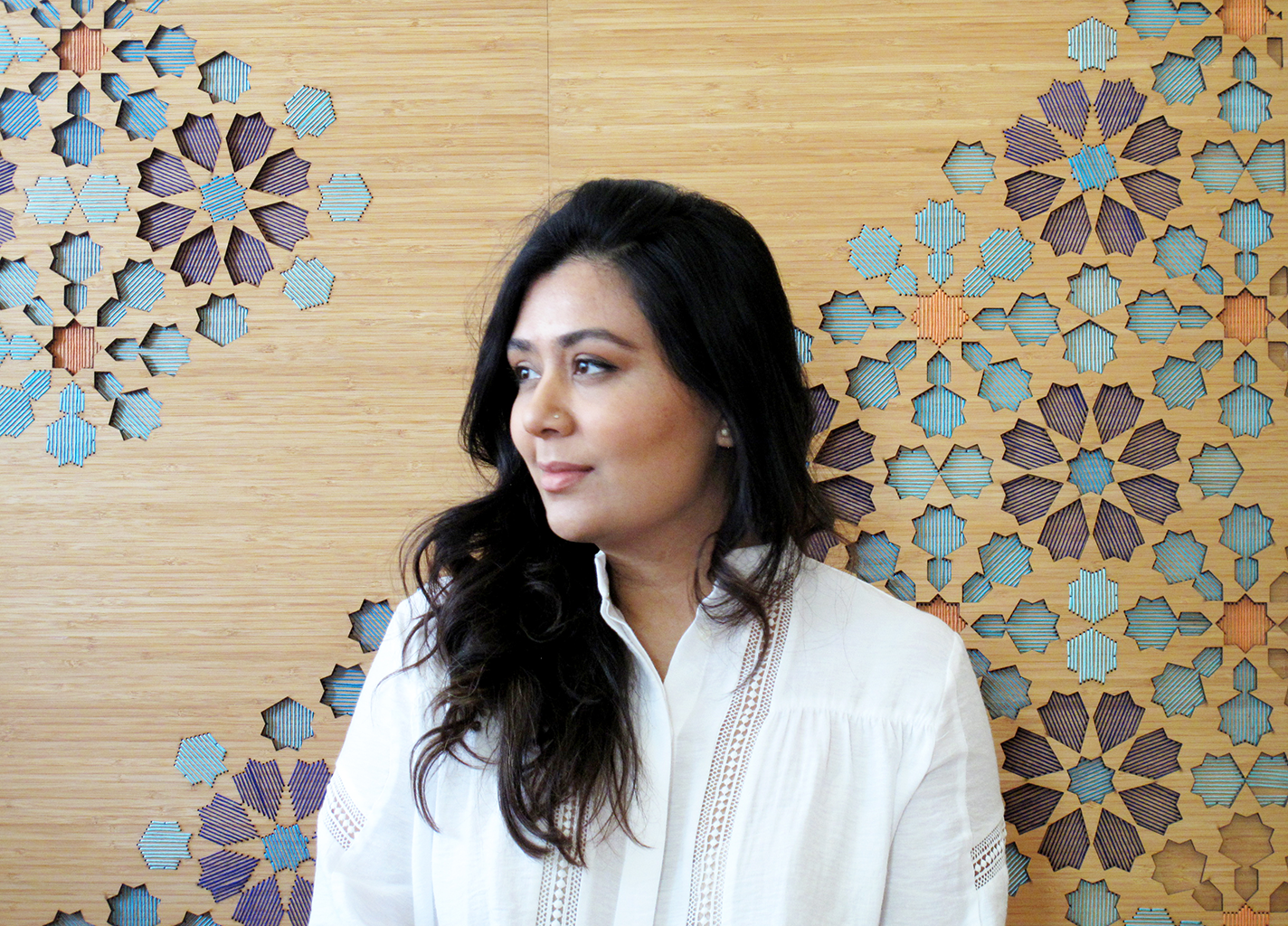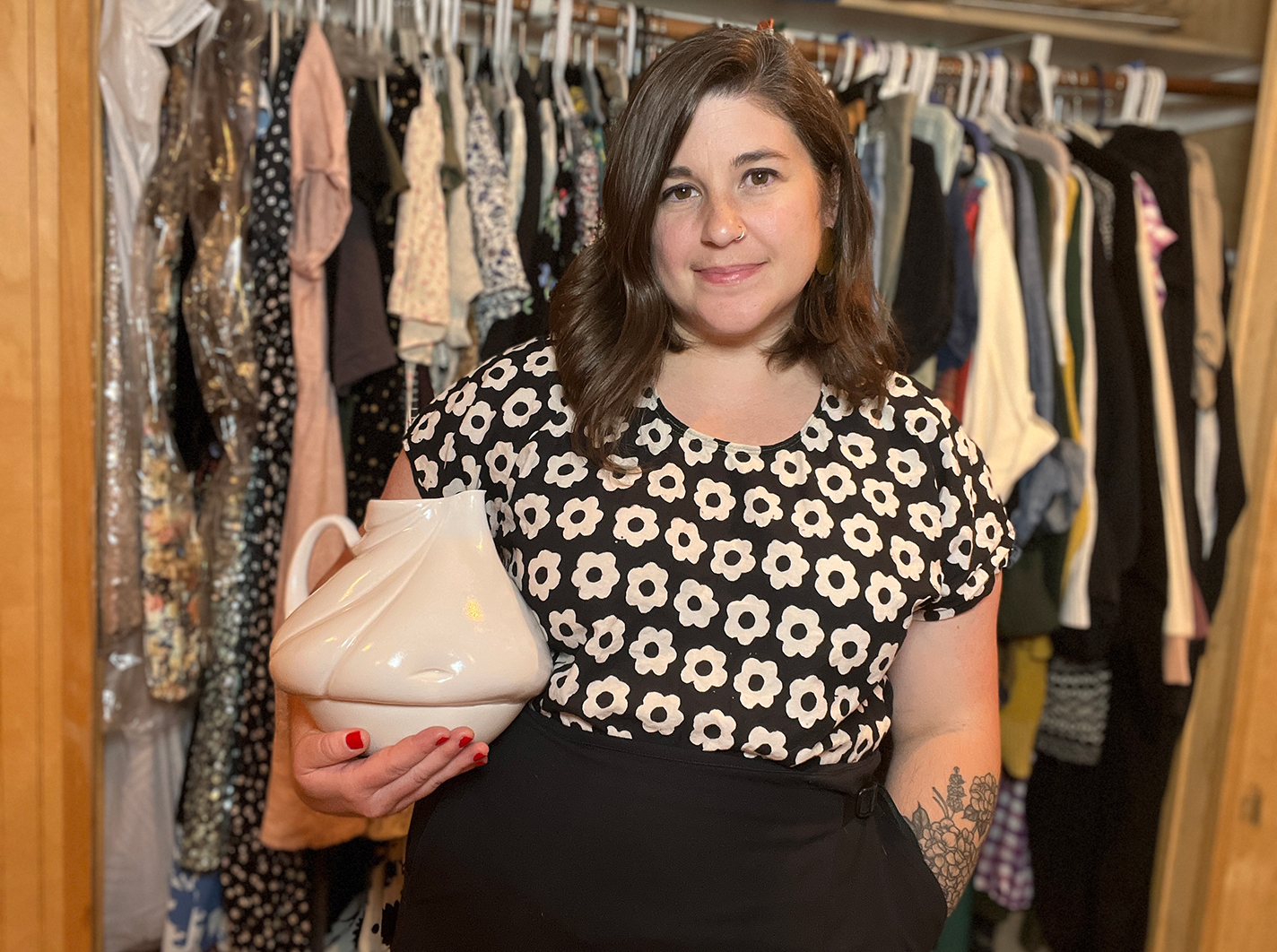Traditional forms and innovative materials join forces in Hyunsoo Alice Kim’s work.
In her artistic practice, Kim researches, designs, and creates textiles out of sustainable materials. Born in South Korea, Kim has lived abroad for years and describes herself as a nomad. Inspired by her lifestyle and need for portability, she created Woven Moonjar, a leather and wire vase evoking the moon jar, an ethereal traditional Korean ceramic form. She is an adjunct professor and Thingspace Fellow at Teachers College, Columbia University, where she is working on a doctorate in education. She wrote about the inspiration and process behind Woven Moonjar in “What’s in a Vessel?” in the Spring 2023 issue of American Craft.
How did your love of craft begin?
My love for craft began even before I learned the word craft. My first weaving project was in kindergarten, where we had a coaster-size tapestry frame. A teacher showed me how to weave with a large flat bamboo needle, up and down the warp.
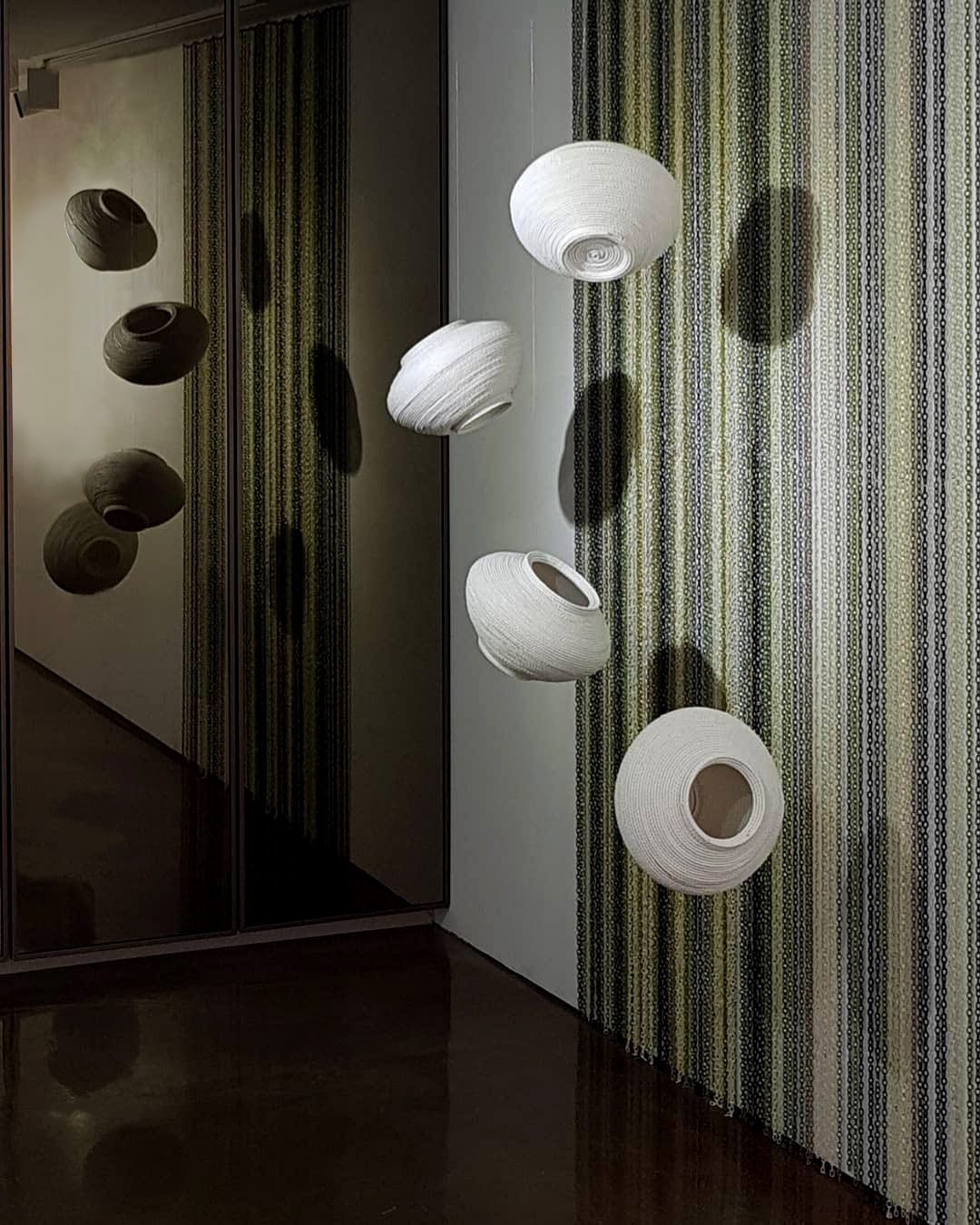
Woven Moon Jar Collection 2018 I, 2018, braided, coiled, and knitted leather, 8 x 10 x 12 in. each (4 pieces total). Installed at Crafts on the Hill Gallery in Seoul, South Korea.
